Bathroom Readers' Institute's Blog, page 162
September 3, 2013
Taking it to the Grave
Undertakers will honor most funeral requests (as long as they’re legal). Check out these strange things people are buried with.
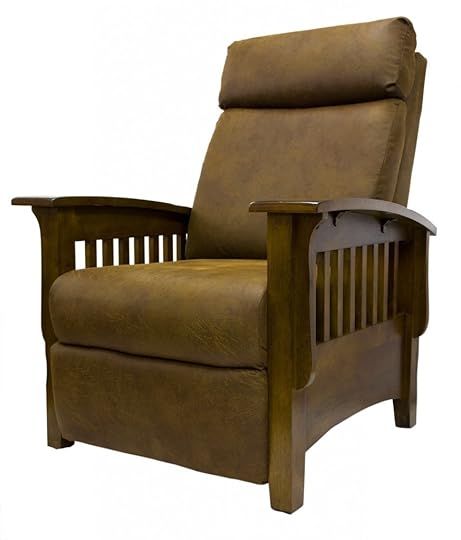 RECLINER. Reuben John Smith (d. 1899) liked to relax in life, so he asked that his eternal resting place be a leather recliner and that a checkerboard be placed in his lap. (Smith also asked to be buried with a key to his tomb in case the undertakers made a mistake.)
RECLINER. Reuben John Smith (d. 1899) liked to relax in life, so he asked that his eternal resting place be a leather recliner and that a checkerboard be placed in his lap. (Smith also asked to be buried with a key to his tomb in case the undertakers made a mistake.)
WHISTLE. In To Have and Have Not (1944), Lauren Bacall delivers a famous line to real-life future husband Humphrey Bogart: “You know how to whistle, don’t you, Steve? You just put your lips together…and blow.” After Bogart was cremated, Bacall put a golden whistle in the urn with his ashes.
PIPE AND TOBACCO. Sixteenth-century explorer Sir Walter Raleigh is credited with popularizing tobacco smoking in England, a habit he picked up on his travels to the New World. His last request before being executed for treason in 1618: one final smoke. Raleigh’s will provided for “ten pounds of tobacco, and two pipes” for any smoker who attended his funeral, and requested that he be buried with his favorite pipe and some tobacco, in a coffin lined with wood from his cigar boxes.
PETS. Ancient Egyptians are famous for it, and people today still like the idea of being buried with their animal companions. Cemeteries have started selling combined burial plots so that owners can lie beside their beloved pets for eternity. One 68-year-old woman from Surrey, England, asked that her cat be put down and buried with her. (The funeral home refused.)
STETSON. Actor Tony Curtis died of heart failure in 2010. He asked for his casket to be filled with items he may “want in the next life,” including a Stetson hat, an Armani scarf, and Anthony Adverse, the novel that inspired his screen name. His family also put his iPhone in the casket…just in case.
August 30, 2013
Musical Word Origins
Because we always wanted to know where the word “music” came from. Here are some musical word origins.
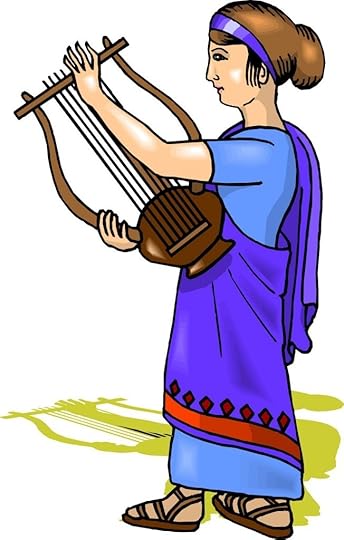 DRUM. This word comes from the Middle Dutch term tromme, which is believed to be onomotopaeic in origin. It became the English drum, as a noun, in the early 1500s.
DRUM. This word comes from the Middle Dutch term tromme, which is believed to be onomotopaeic in origin. It became the English drum, as a noun, in the early 1500s.
PSALM. The old Greek verb psallein meant “to pluck a stringed instrument.” That became psalmos, which meant something along the lines of “the sound of a harp,” and then came to mean a song, especially a sacred song of the Jewish tradition, as in the psalms of King David.
DOO-WOP. This music style, begun in the 1950s and characterized by rich vocal harmonies, was named for the nonsense syllables sung behind the lead. First song that actually had the phrase “doowop” in it: “When You Dance,” a 1955 hit by the Turbans. It didn’t become an official word, however, until 1969.
MUSIC. It became an English word around A.D. 1250. It comes from the Middle French musique, which came from the Latin musica, which came from the Greek mousikos, which referred to any art ruled by Zeus’s nine daughters who protected the arts, known as the Mousae, or Muses.
TREBLE. From the Latin triplus, meaning “triple.” It was first used as a musical term in English the 1300s, describing the third, and highest, part in three-part harmony. Today it refers generally to the higher frequencies in music (as opposed to the lower bass frequencies).
SEA SHANTY. Shanties are songs sung by sailors in a tradition going back at least to the 1500s. They’re often call-and-response songs and were used like other work songs—to establish a rhythm for repetitive tasks and to help keep the crew’s spirits up. An example you probably know: “Blow the Man Down.” (“Give me some time to blow the man down.”) The term comes from the French chantez, meaning “Sing!” (the command from of chanter, “to sing”). It became an English word in the 1860s.
CHORD. From the Middle English cord, which was simply a shortened version of accord. The musical meaning, which is three or more notes played simultaneously—or “in accord” with one another—came into use in the 1500s. The first recorded use of the written word with an “h” was in 1608.
CELLO. It’s short for the Italian violoncello. The Italian suffix -one denotes largeness, so a big viola would be a violone—and that was originally the name of the double bass (which looks like a big viola). The suffix -cello denotes smallness. In the 1600s, a new instrument, larger than a viola but smaller than a violone, came into use and was given the name violoncello—basically “big little viola.” It came into English in the early 1700s, and in the 1850s, it started being shortened to cello.
MELODY. This goes all the way back to the ancient Greeks. Their word melos meant “song,” and aoidein meant “to sing,” and they were combined to form melodia, the word for “music.” That went to Old French as melodie, and then to English in the 1200s as “melody.”
CLEF. A clef is a symbol placed at the beginning of the staff in sheet music, signifying the designated pitch range of the music (as in treble clef or bass clef). It came into English use in the late 1500s from the Latin clavis, meaning “key.”
August 29, 2013
Themed Restaurants
Dining out can get kind of boring. After all, how many times can you have the same old burger at the same old coffee shop? Fortunately, in the last 20 years, themed restaurants have emerged, offering diners not just a meal…but an experience. Although, not all of them succeed, they all make a great story.
 The Modern Toilet
The Modern Toilet
Location: Taipei, Taiwan
Details: Yes, it’s a toilet-themed restaurant. Diners sit on toilets and eat out of toilet-shaped bowls and plates. The interior of the restaurant is laid out with brightly colored bathroom tile, and the lights are shaped like urinals. The favorite menu item, says owner Eric Wang, is chocolate ice cream—probably because “it looks like the real thing.”
MIM
Location: Barcelona, Spain
Details: Don’t speak Spanish? Don’t worry, the waiters don’t speak it, either. In fact, they don’t speak any language at all. That’s because MIM is a mime-themed restaurant, housed in an old theater. Staff communicates through body language, and every few minutes, they put on short mime performances, culminating in a flying trapeze act. (Warning: If you suffer from coulrophobia— the fear of mimes—avoid this restaurant.)
ADAM & EVE’S
Location: Indiana
Details: No shirt? No shoes? No problem. Adam & Eve’s is the world’s only naked restaurant. The waiters are nude, the cooks are nude, and the customers are nude. (Better not order anything hot.)
ALCATRAZ BC
Location: Tokyo
Details: If you’ve ever wondered what life on the brutal, desolate San Francisco island prison was like, go to this Japanese bistro. Uniformed “wardens” (not waiters) cuff patrons at the big steel front door and lead them to “private cells” (not tables). Menu items include chipped beef on toast, pudding cups, and other foods served in a prison cafeteria. Alcatraz BC is only one of the many themed restaurants in Tokyo.
THE NEWS ROOM
Location: Minneapolis
Details: Think reading old newspapers is an exciting way to spend an evening? The News Room celebrates old newspapers and the often-depressing headlines of the 1920s and 1930s. The restaurant is divided into several newspaper “sections,” including “The Sports Page” (old sports footage plays on monitors) and “The Financial Page” (a Depression-era stock ticker hangs from the rafters and continually shoots out ticker tape and imaginary stock quotes). In every room, rolled-up giant newspapers hang from the ceiling.
RED SQUARE
Location: Las Vegas
Details: When most Americans think of the Soviet Union they think of a cruel, totalitarian government, breadlines, and impending nuclear war. But Red Square—a family-friendly restaurant located in one of Vegas’s grandest hotels, Mandalay Bay—plays up Soviet life as nostalgic and kitschy. The red decor features a headless statue of Lenin, a hammer-and-sickle logo, and propaganda posters that glorify the worker. Naturally, it also has one of Las Vegas’s largest assortments of vodka.
August 28, 2013
Random Origins: The Flashlight, 911 Call System, and the Slurpee
Once again Uncle John answers the question: Where does all this stuff come from?
THE FLASHLIGHT
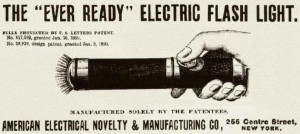 A few years after D-cell batteries were invented in 1896 came the first battery-powered hand lights. The first one— called the “Electrical Hand Torch”—was invented by American Conrad Hubert. Because early batteries were weak and the contacts faulty, the lights flashed a lot, hence the name “flashlight.”
A few years after D-cell batteries were invented in 1896 came the first battery-powered hand lights. The first one— called the “Electrical Hand Torch”—was invented by American Conrad Hubert. Because early batteries were weak and the contacts faulty, the lights flashed a lot, hence the name “flashlight.”
Even after the batteries and contacts were improved, the name stuck. (In the U.K., flashlights are still referred to as “torches.”)
THE 911 EMERGENCY CALL SYSTEM
 The 999 emergency phone number was set up in England after a 1937 house fire killed five people. It wasn’t until 1967 that the FCC and AT&T worked together to create the system in the United States. They chose “911” because “999” took too long to dial on a rotary phone. But AT&T was taking a long time to implement the system, so Bob Gallagher, president of the Alabama Telephone Company, ordered his plant manager, Robert Fitzgerald, to set up the nation’s first 911 service in Haleyville, Alabama. By the mid-1970s, most of the U.S. could dial 911.
The 999 emergency phone number was set up in England after a 1937 house fire killed five people. It wasn’t until 1967 that the FCC and AT&T worked together to create the system in the United States. They chose “911” because “999” took too long to dial on a rotary phone. But AT&T was taking a long time to implement the system, so Bob Gallagher, president of the Alabama Telephone Company, ordered his plant manager, Robert Fitzgerald, to set up the nation’s first 911 service in Haleyville, Alabama. By the mid-1970s, most of the U.S. could dial 911.
THE SLURPEE
 On a hot day in 1957 Omar Knedlik, a World War II vet, put some pops in the freezer at his Dairy Queen in Coffeyville, Kansas. By the time the sodas were opened, they’d turned to slush. And Knedlik’s customers loved them. Inspired, he started tinkering with parts from the soda fountain, an ice cream machine, and his car’s air conditioner. A few years later, the machine—which blends flavored syrup, C02, and semi-frozen ice—was complete. Knedlik called his new the drink the ICEE, and was soon selling machines all over the U.S. In 1967 the 7-Eleven corporation licensed them.
On a hot day in 1957 Omar Knedlik, a World War II vet, put some pops in the freezer at his Dairy Queen in Coffeyville, Kansas. By the time the sodas were opened, they’d turned to slush. And Knedlik’s customers loved them. Inspired, he started tinkering with parts from the soda fountain, an ice cream machine, and his car’s air conditioner. A few years later, the machine—which blends flavored syrup, C02, and semi-frozen ice—was complete. Knedlik called his new the drink the ICEE, and was soon selling machines all over the U.S. In 1967 the 7-Eleven corporation licensed them.
A company ad man named Bob Stanford came up with the name “Slurpee,” based on how it sounds when sucked through a straw.
Since then, more than six billion Slurpees have been slurped.
______________________________________
This episode of Random Origins was brought to you from Uncle John’s 24-Karat Gold Bathroom Reader.
August 27, 2013
The Thief Apologizes
 Sometimes even a thief can feel remorse. Recently, a group of burglars in San Bernardino, California, had a change of heart. The computers they stole belonged to San Bernardino Sexual Assault Services—a nonprofit. Once the burglars realized what they had done, they felt so bad that they returned the computers and left an apology note. The note read:
Sometimes even a thief can feel remorse. Recently, a group of burglars in San Bernardino, California, had a change of heart. The computers they stole belonged to San Bernardino Sexual Assault Services—a nonprofit. Once the burglars realized what they had done, they felt so bad that they returned the computers and left an apology note. The note read:
“We had no idea what we were taking. Here is your stuff back. We hope that you guys can continue to make a difference in people’s lives.”
Here are few other stories of nice crooks from Uncle John’s True Crime.
____________________________________
Nice Crooks
If they were really nice, they probably wouldn’t be crooks to begin with. But what else would you call a thief who apologizes?
GIMME TEN
At 5:00 a.m. on November 17, 2003, a man walked into a 7-Eleven in Santee, California, pulled out a gun, and told the clerk to give him $10. The clerk gave the man the money, and the man ran off. At 10:00 a.m. the same man returned to the store, put $10 on the counter, and apologized for the robbery. The clerk didn’t wait for the apology—he immediately pressed the “panic” button under the counter. The police arrived and arrested the thief, who explained that he had stolen the money to buy gas for his car.
BEER NUT
Twenty-one-year-old Nicholas Larson stole a cash register from the Bonnema Brewing Co. in the town of Atascadero, California. Apparently he couldn’t stand the guilt, because the next day he called the brewery to apologize. The kicker: He turned himself in for the theft—even though the register had been empty.
SHOOTING BLANKS
A man walked into a Kansas liquor store, pulled out a gun, and told the clerk, “Give em everything in the register.” The clerk told him that it was empty—there was no money. “That’s okay,” the robber responded. “There aren’t any bullets in the gun. I was just kidding.”
CHANGE OF HEART
In January 2002, Ronald Van Allen went into the Savings Bank of Manchester in Manchester, Connecticut, and handed the teller a note. “This is a robbery!!” it read. “All I want is the money from the cash drawer. No one has to get hurt or shot but me. Sorry for the inconvenience.” Van Allen left with $2,000, but four days later, he walked into the Manchester police department with a bag full of the money, apologized, and turned himself in. “I wish all of our cases were solved like this,” said Detective Joseph Morrissey.
August 26, 2013
Why a Just Because Day? Just…because.
 Sometimes you just need a good excuse to TP your neighbor’s house…or leave a batch of chocolate chip cookies on that same neighbor’s doorstep. For either evil deed, or for good deeds, there’s Just Because Day.
Sometimes you just need a good excuse to TP your neighbor’s house…or leave a batch of chocolate chip cookies on that same neighbor’s doorstep. For either evil deed, or for good deeds, there’s Just Because Day.
Just Because Day is tomorrow, August 27, and it’s the perfect day to do whatever you please—literally anything. Such is the nature of “Just Because Day.” According to Holiday Insights, an internet depository for these unusual annual events and made-up holidays, it was dreamt up by a California man named Joseph J. Goodwin. Back in the ‘60s, Goodwin created the holiday in order to honor life, his family, and leisure time. He celebrated the first Just Because Day by giving his wife a transistor radio (“just because!” he told her). It became an annual tradition for the Goodwins and one that, presumably, spread from them via word-of-mouth.
So if you’ve ever wanted to act on a totally illogical impulse to sing Bon Jovi’s “Livin’ on a Prayer” in Dutch during an important business meeting now you’ve got an excuse…provided you do so tomorrow. That’s not to say that you can’t engage in a more philanthropic activity like volunteering at a soup kitchen or helping an elderly woman cross the street. Or you could do…absolutely nothing. Just because.
What will you be doing on Just Because Day?
August 22, 2013
Weird Hotels
Part of the fun of travel is enjoying the local flavor. So on your next trip, eat the local food, see the local sights…and stay at the local jail. Here are a few weird hotels we discovered. What is the weirdest hotel you have ever stayed in?
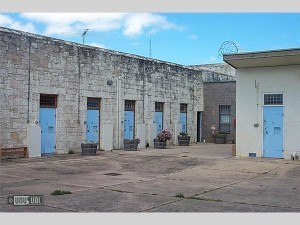 HOTEL: The Old Jail
HOTEL: The Old Jail
LOCATION: Mount Gambier, Australia
DESCRIPTION: The Old Jail offers the accommodations—and decidedly spooky atmosphere—of a huge, 19th-century rural prison. The hotel was once the South Australian State Prison, which operated from 1866 to 1995. Not much has changed when it was converted into a hotel. Showers are still communal and best are still cots, but the cell doors can now be opened from the inside. “Inmates” sleep four to a cell (either with strangers or family) or can pay double for a private, two-person suite.
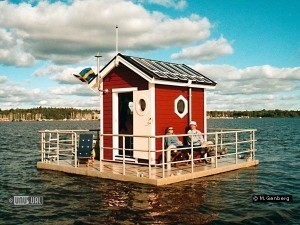 HOTEL: Utter Inn
HOTEL: Utter Inn
LOCATION: Lake Malaren, Sweden
DESCRIPTION: Literally “Otter Inn,” the hotel was conceived as a modern art project by artist Mikael Genberg. Guests enter through a cottage floating on the surface of Lake Malaren then decend 10 feet into an underwater “reverse aquarium,” where the room is dry—but surrounded by water and fish that are visible through wall-to-wall picture windows.
 HOTEL: Dog Bark Park Inn
HOTEL: Dog Bark Park Inn
LOCATION: Cottonwood, Idaho
DESCRIPTION: It would be odd to sleep on your back on top of a doghouse, like Snoopy, but it’s odder still to sleep inside the dog. The Dog Bark is a two-story wooden dog. It was built and is managed by a husband and wife team of chainsaw artists who invested the money they made selling dog-shaped wood carvings on QVC into building a dog-themed hotel. (And, yes, dogs are welcomed.)
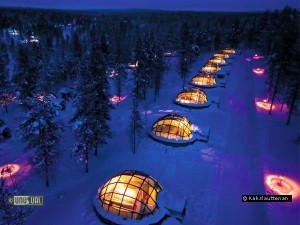 HOTEL: Kakslauttanen Hotel and Igloo Village
HOTEL: Kakslauttanen Hotel and Igloo Village
LOCATION: Nordkap, Finland
DESCRIPTION: Guests get to sleep in real igloos made of ice and snow blocks. They are completely dark and the only source of heat are the down sleeping bags. (The less adventurous can sleep in heated glass igloos.) Facilities also include an ice-cold swimming pool, the world’s largest smoke sauna, and the world’s largest restaurant made of snow, which has to be rebuilt every winter.
Featured article from Uncle John’s Bathroom Reader Wonderful World of Odd.
August 21, 2013
Fruit Brute and Other Forgotten Cereals
Wheaties and Rice Krispies have taken up permanent residency in America’s breakfast bowls—these forgotten cereals, not so much.
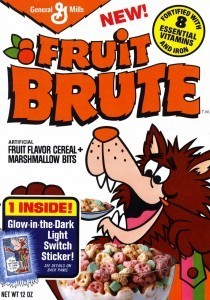 Fruit Brute: General Mills debuted a line of five monster cereals in the 1970s: Franken Berry, Yummy Mummy, Count Chocula, Boo Berry, and Fruit Brute. The biggest flop of the bunch: Fruit Brute. But it has a cool factor—filmmaker Quentin Tarantino collects old cereals, and his personal box of Fruit Brute has appeared in his movies Reservoir Dogs and Pulp Fiction. BREAKING NEWS: This Fall we will see the return of Fruit Brute and Fruity Yummy Mummy for Halloween. This may be the best Halloween EVER!
Fruit Brute: General Mills debuted a line of five monster cereals in the 1970s: Franken Berry, Yummy Mummy, Count Chocula, Boo Berry, and Fruit Brute. The biggest flop of the bunch: Fruit Brute. But it has a cool factor—filmmaker Quentin Tarantino collects old cereals, and his personal box of Fruit Brute has appeared in his movies Reservoir Dogs and Pulp Fiction. BREAKING NEWS: This Fall we will see the return of Fruit Brute and Fruity Yummy Mummy for Halloween. This may be the best Halloween EVER!
Graham Crackos: Kellogg’s released their graham-cracker-flavored cereal in the late-1970s, a few years before the crack-cocaine epidemic that hit American cities. In light of this, old commercials for Crackos become unsettling. In one, a character named George arrives at a suburban house to deliver a box of Crackos to a new family. In the background, a cheery balladeer sings, “Something new is comin’ to town, George the Milkman is bringin’ it ’round.” After the mother takes a bite, she asks George if the cereal will help slow her kids down. “Long enough for them to eat,” he replies.
Mr. T Cereal: Based on the fool-pitying strongman’s animated self in Mister T, his early-1980s cartoon show, it was made up of crispy corn chunks shaped like the letter T. Essentially, Mr. T Cereal was a clone of Alpha-Bits, but with just one letter.
Prince of Thieves: This cash-in on the 1991 film Robin Hood: Prince of Thieves had a couple of problems: 1) Manufacturer Ralston-Purina couldn’t get the rights to Thieves star Kevin Costner’s likeness, so they had to put a generic Robin Hood image on the box, and 2) the cereal was supposed to look like little arrows, but came out resembling a certain part of the male anatomy.
Featured story from Uncle John’s Fully Loaded 25th Anniversary Bathroom Reader.
August 20, 2013
Weird Invention: Dumb USB Gadgets
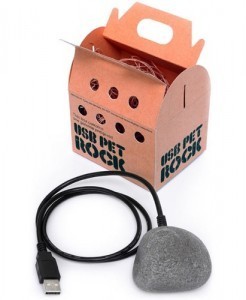 Pet Rock: The item that became synonymous with the whimsical and gullible 1970s has returned! Only now, it’s high-tech. In the spirit of the original, it does nothing; plugging it into your computer’s USB port doesn’t even draw any power away.
Pet Rock: The item that became synonymous with the whimsical and gullible 1970s has returned! Only now, it’s high-tech. In the spirit of the original, it does nothing; plugging it into your computer’s USB port doesn’t even draw any power away.
 Squirming Tentacle: People will think an octopus or the fictional alien monster Cthulhu has taken control of your laptop when they see a moving tentacle coming out of a USB port. Unlike the Pet Rock, at least it moves.
Squirming Tentacle: People will think an octopus or the fictional alien monster Cthulhu has taken control of your laptop when they see a moving tentacle coming out of a USB port. Unlike the Pet Rock, at least it moves.
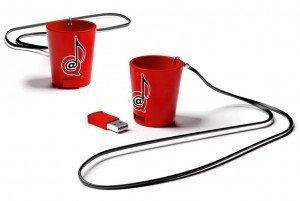 Power Hour Album Shot Glass: This 1GB external storage drive contains 60 on-minute drinking songs. It fits perfectly into an included shot glass, used to play a game where the user takes a shot after every song.
Power Hour Album Shot Glass: This 1GB external storage drive contains 60 on-minute drinking songs. It fits perfectly into an included shot glass, used to play a game where the user takes a shot after every song.
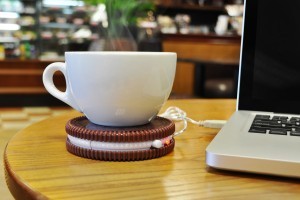 Hot Cookie Cup Warmer: Working hard will never again mean that your long-ignored cup of coffee will go cold. This miniature hot plate, which resembles an oversize Oreo cookie, plugs into your computer and keeps a mug warm while you’re focusing on a problem, attending a meeting, or trying to advance to the next level of World of Warcraft.
Hot Cookie Cup Warmer: Working hard will never again mean that your long-ignored cup of coffee will go cold. This miniature hot plate, which resembles an oversize Oreo cookie, plugs into your computer and keeps a mug warm while you’re focusing on a problem, attending a meeting, or trying to advance to the next level of World of Warcraft.
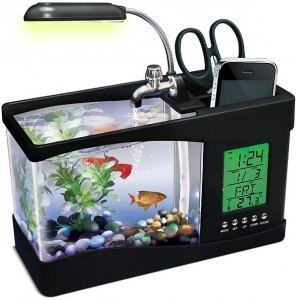 Fishquarium: Containing enough room (or maybe not enough room) for a couple of goldfish, the Fishquarium plugs into your computer, which powers a low-voltage pump and filtration system while the sounds of nature soothe away stress. It also has a pencil holder.
Fishquarium: Containing enough room (or maybe not enough room) for a couple of goldfish, the Fishquarium plugs into your computer, which powers a low-voltage pump and filtration system while the sounds of nature soothe away stress. It also has a pencil holder.
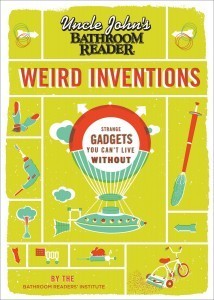 Want more weird inventions? Featured article is from
Want more weird inventions? Featured article is from
Uncle John’s Bathroom Reader Weird Inventions.
August 16, 2013
Uncle John’s Funniest Ever Giveaway!
Another box of advances has just arrived at the office. This one is for Uncle John’s Funniest Ever Bathroom Reader. The book will be available mid October, but we are giving away a copy each to 5 lucky winners (scroll to the bottom of this page to fill out the entry form. Sorry, US Only.). Also, as a bonus, here is an article from the book.
_________________________________________
CRAZY WORLD RECORDS
Uncle John holds the world record for the most pages ever read on the throne.
Here are some other dubious achievements.Christian Adam of Germany set the distance record for riding a bicycle backward while playing the violin: 37.5 miles. It took him a little more than five hours. He played J. S. Back…er, Bach.
On May 6, 2009, Eric “No Class” Matyjasik of Arizona unzipped his pants 162 times in 30 seconds, breaking the old record by 27 zips.
The unofficial world record for staying awake: 18 days, 17 hours, set by Maureen Weston of England while participating in a rocking-chair marathon. Although she hallucinated quite a bit, she says she hasn’t suffered any long-term health effects.
Naya Ganj of India has the world’s longest ear hair. “Making it onto Guinness is special for my family! God has been very kind to me!” said the guy with 5.25 inches of hair growing from his ears.
_________________________________________



